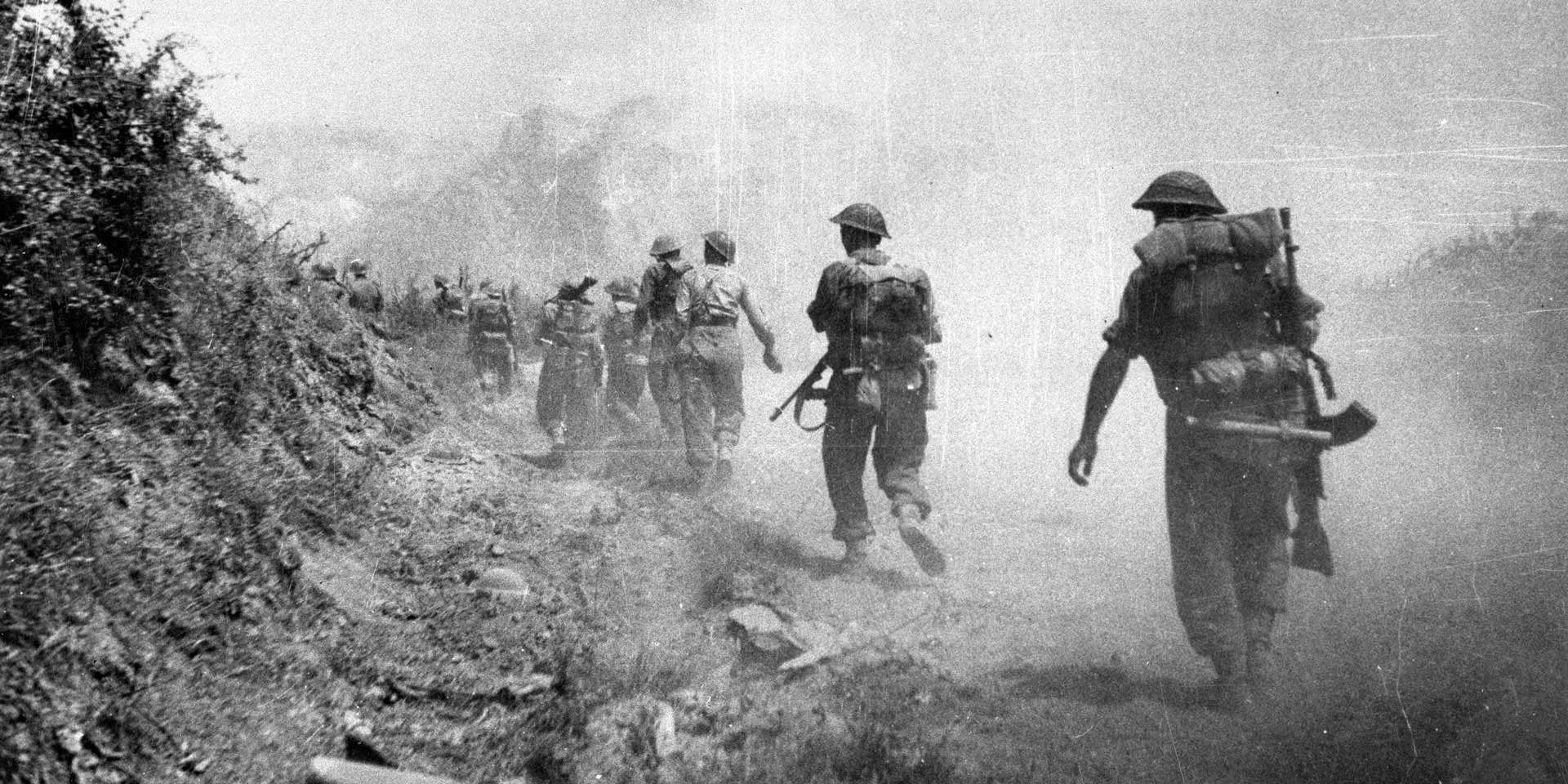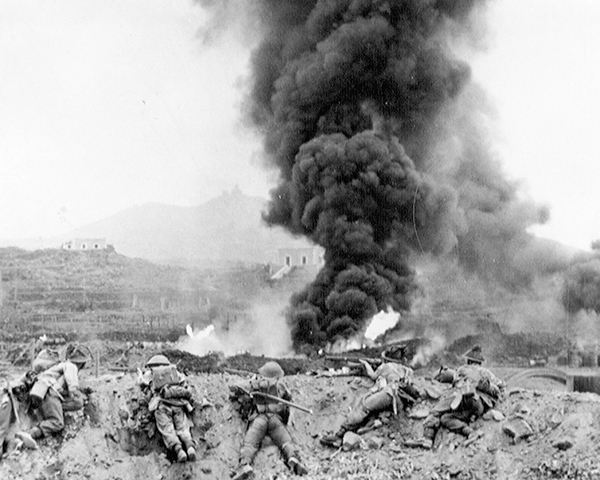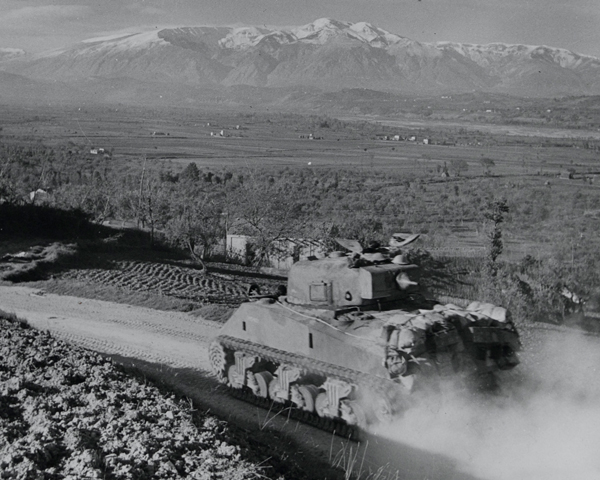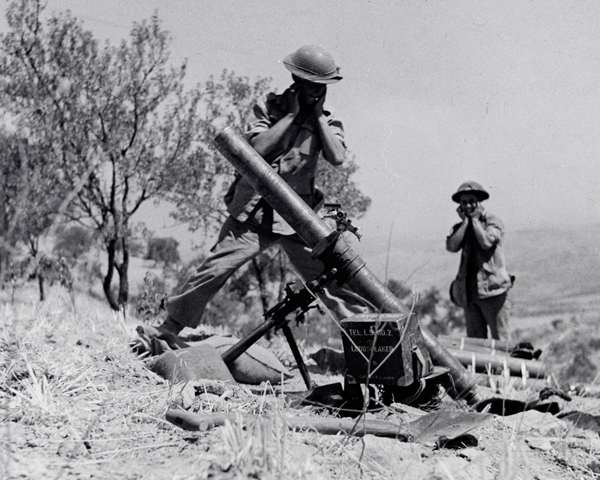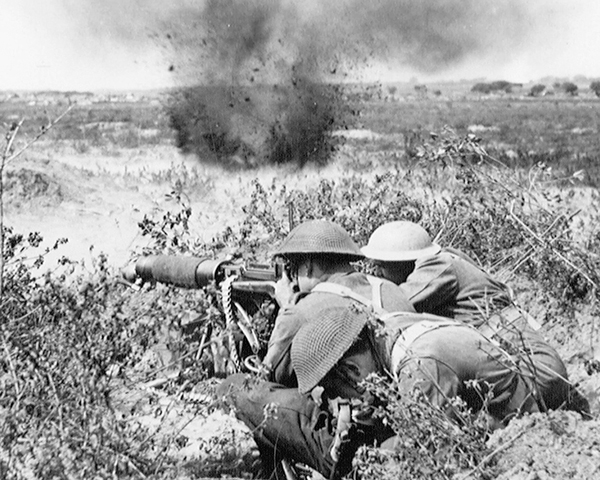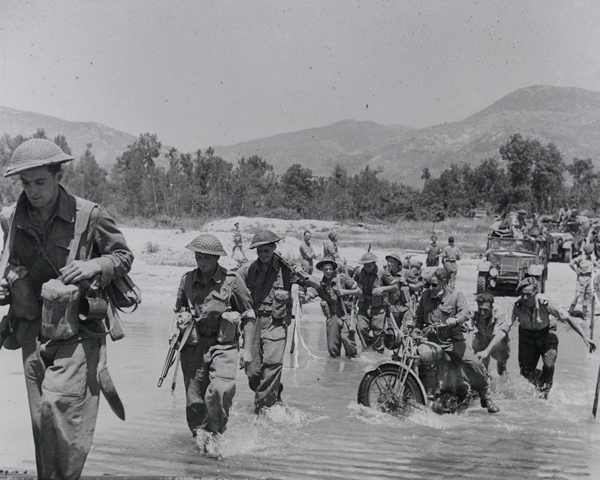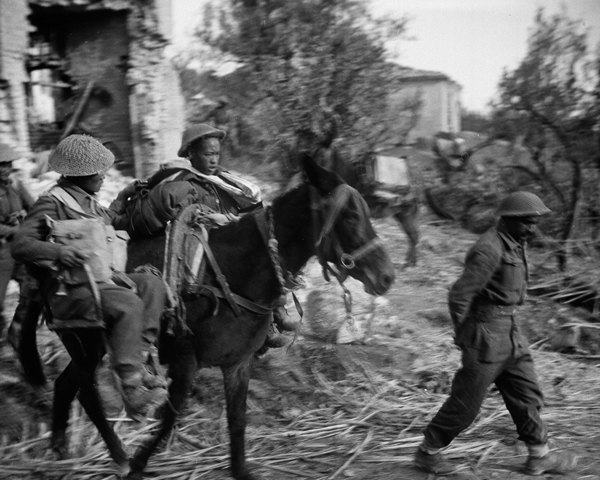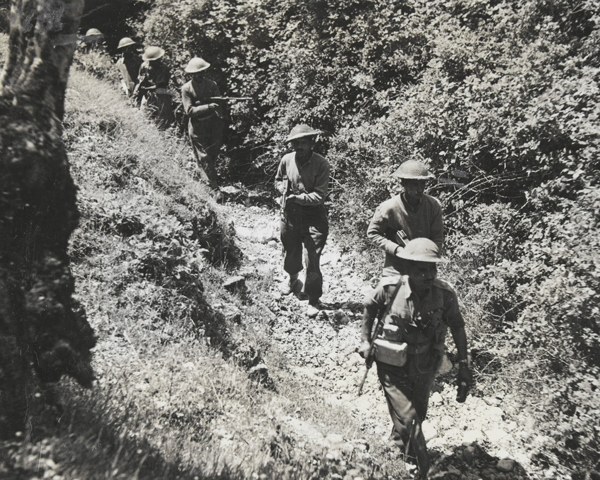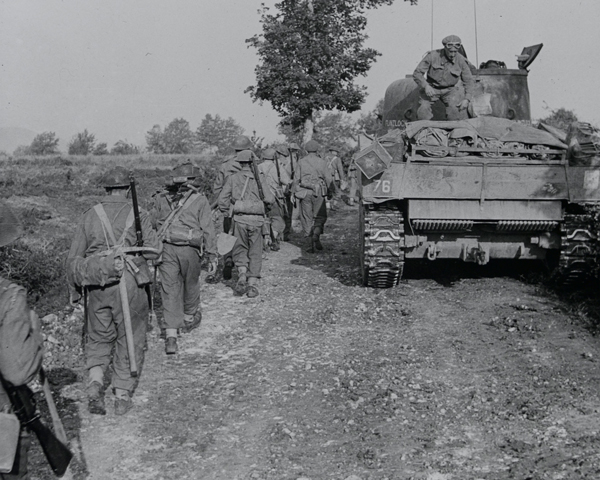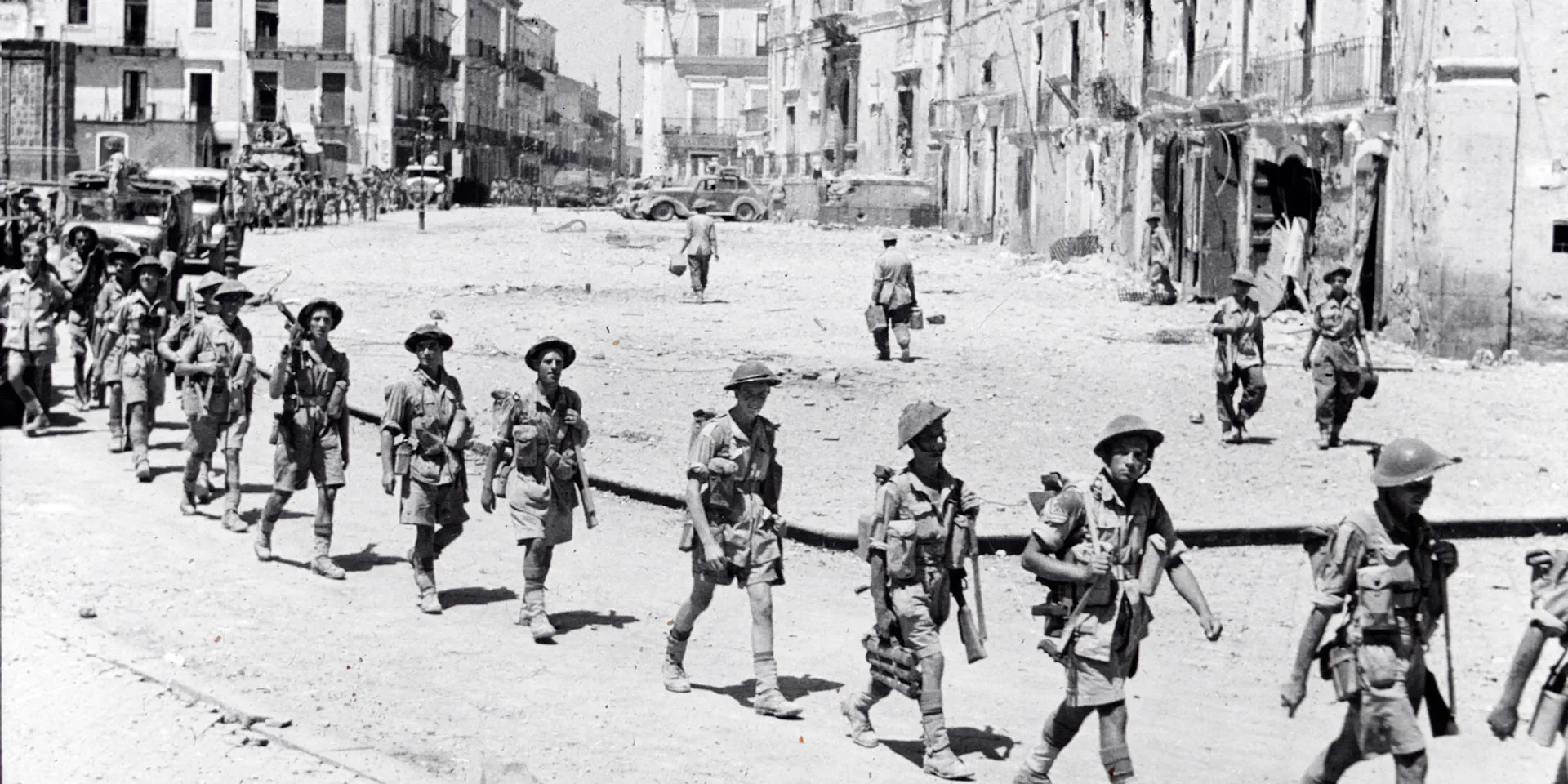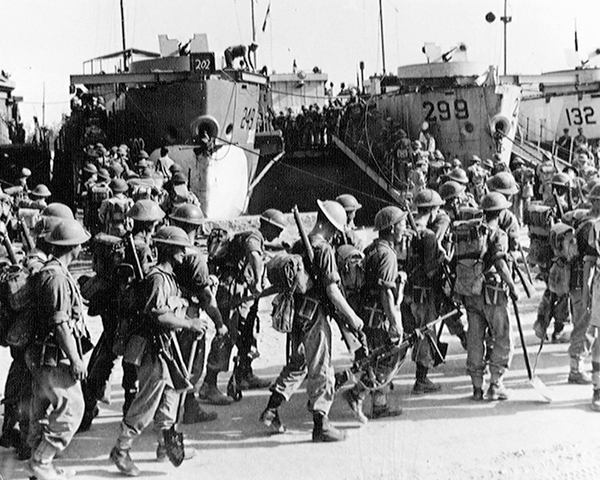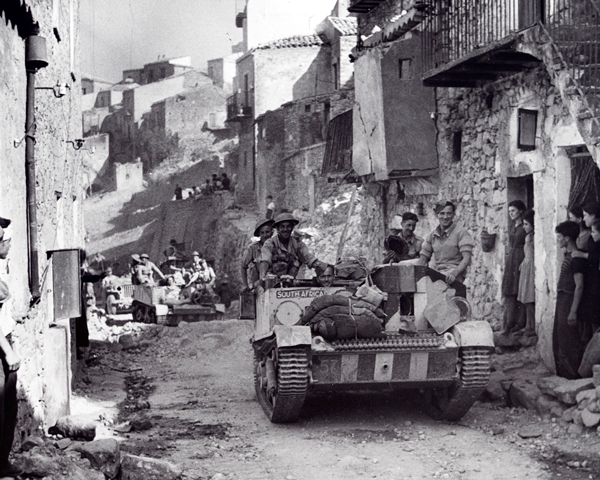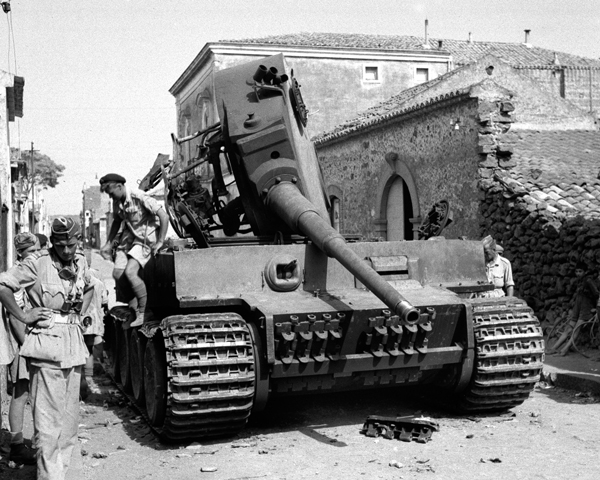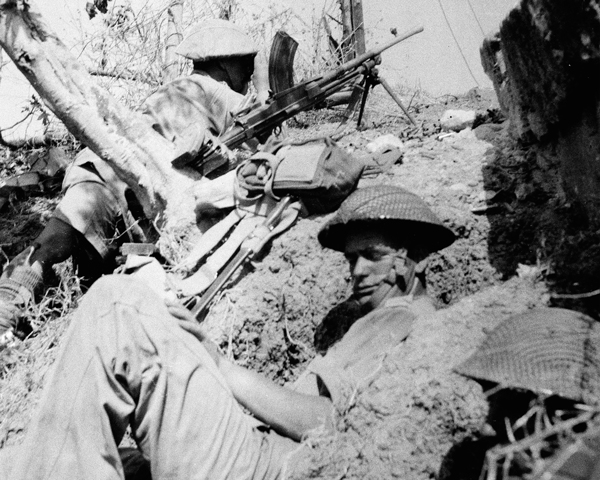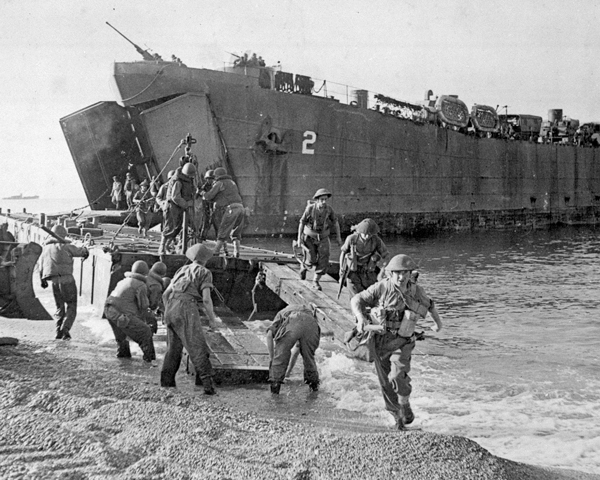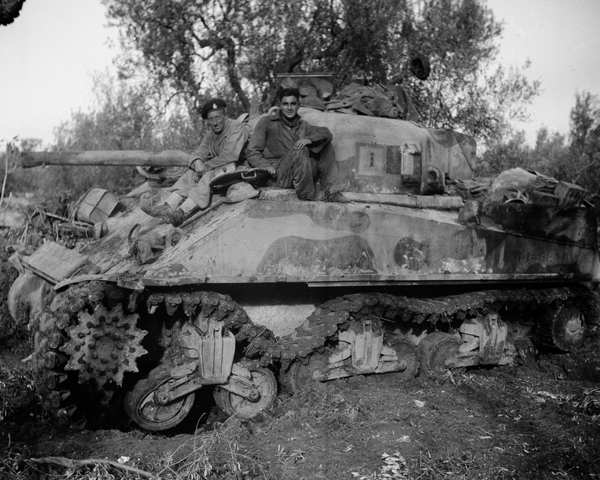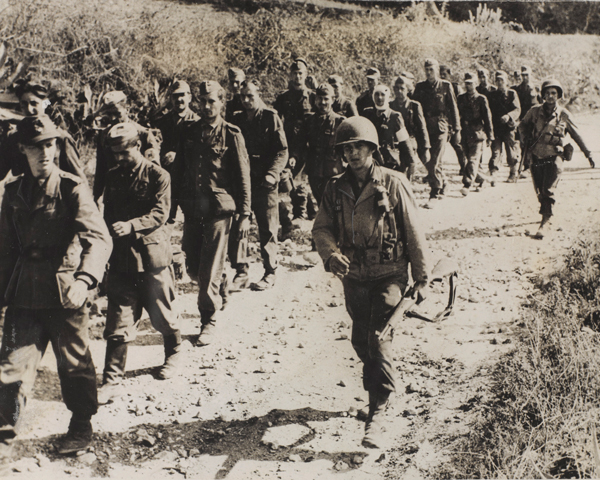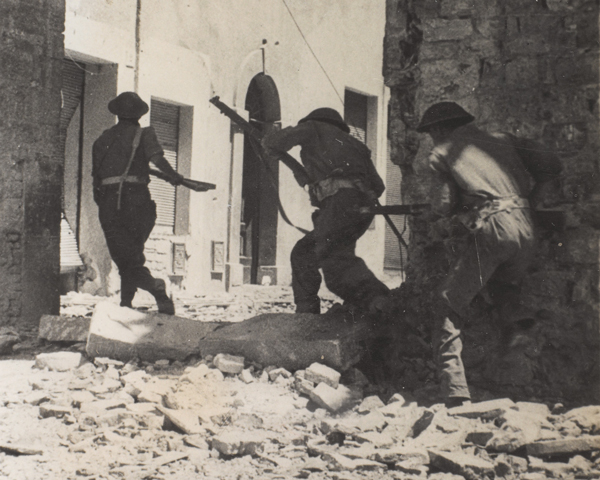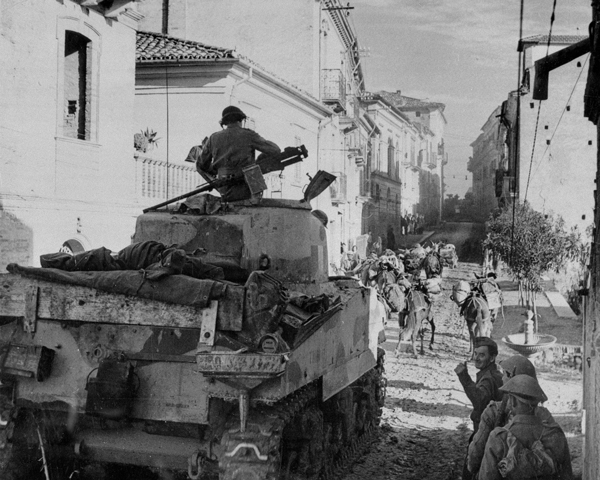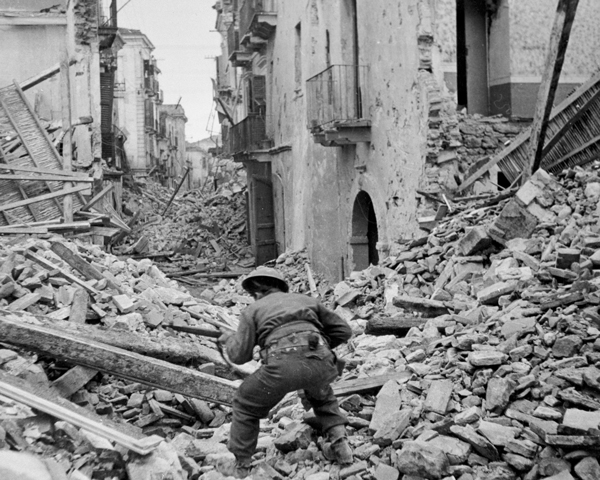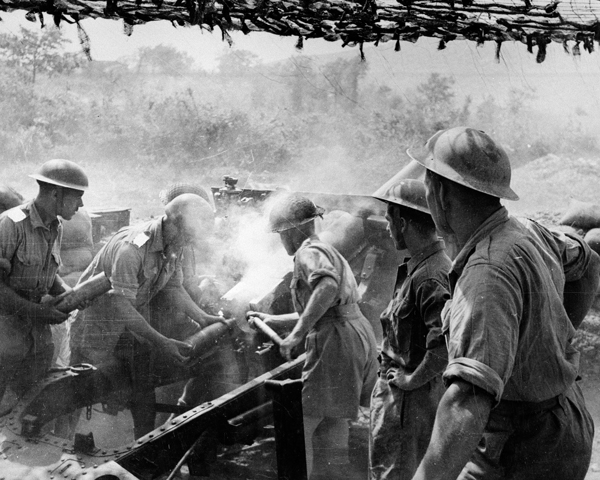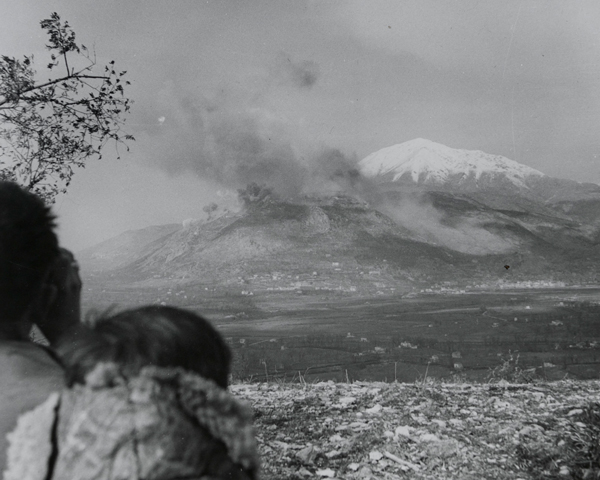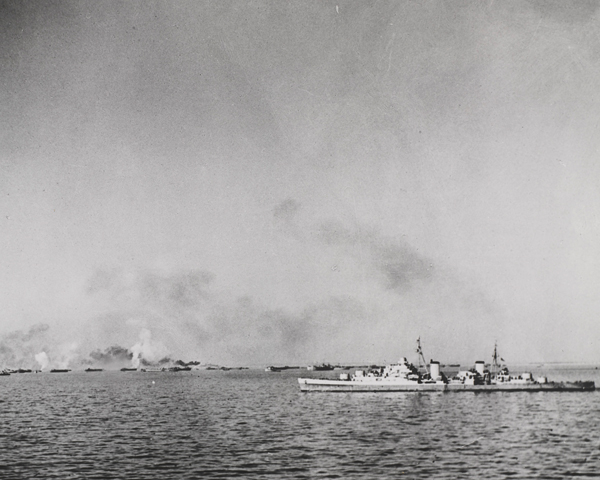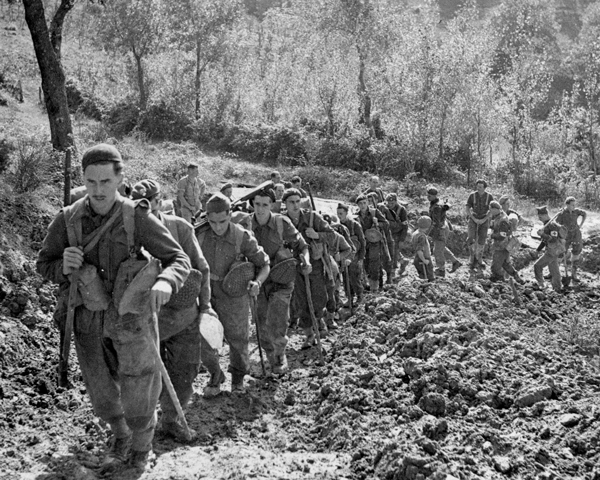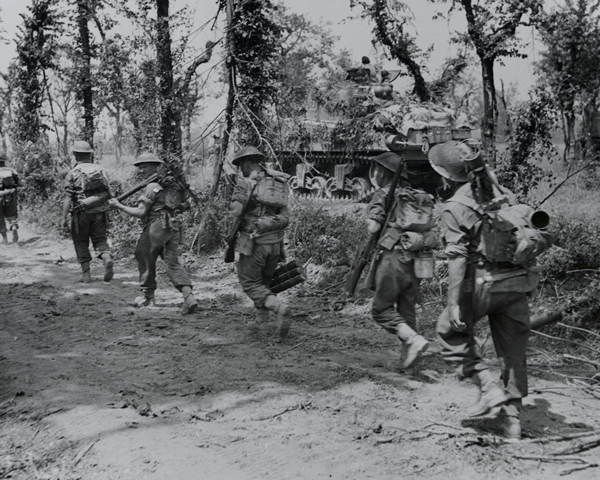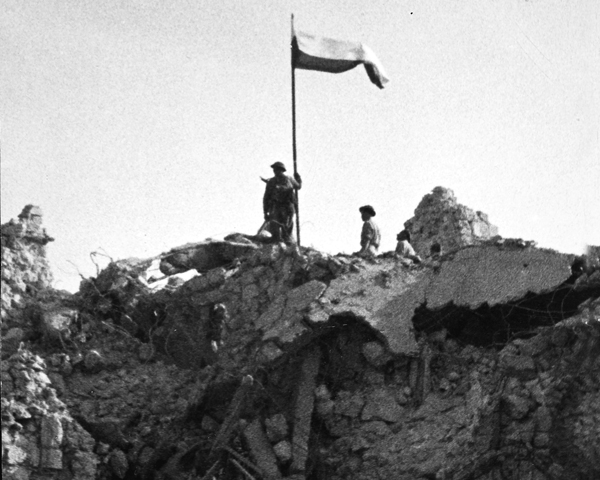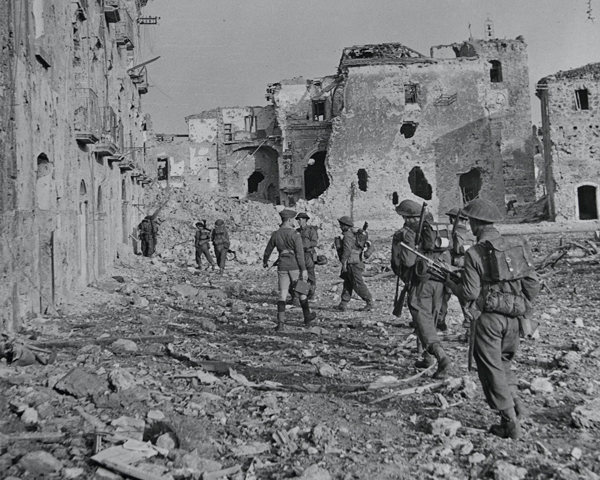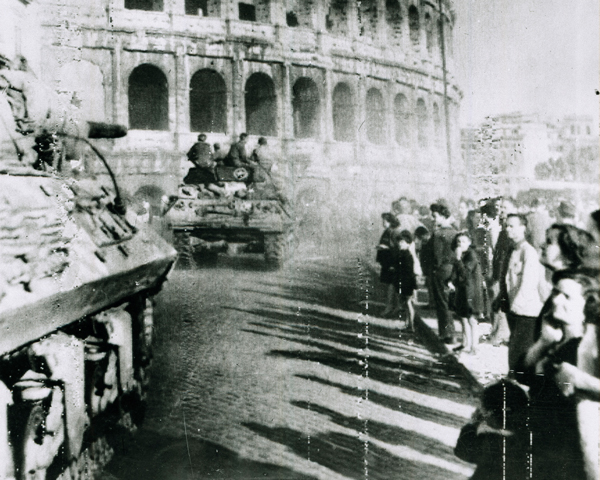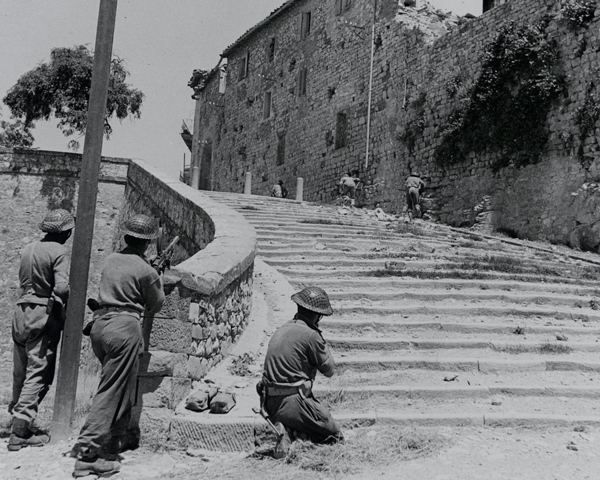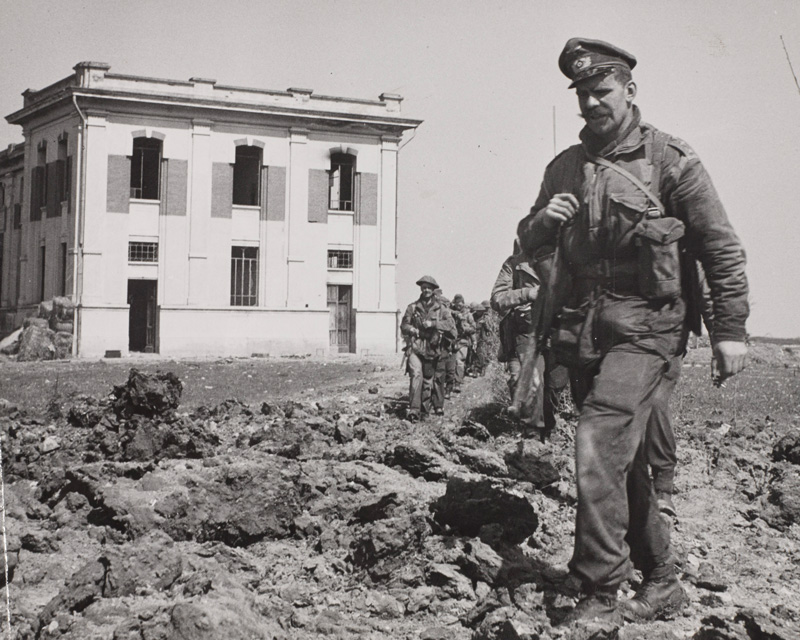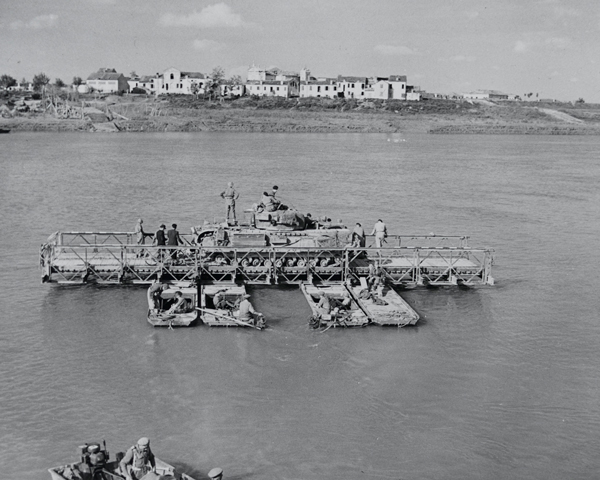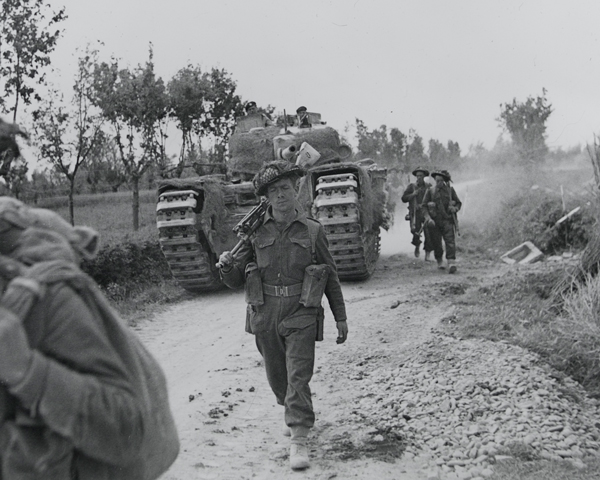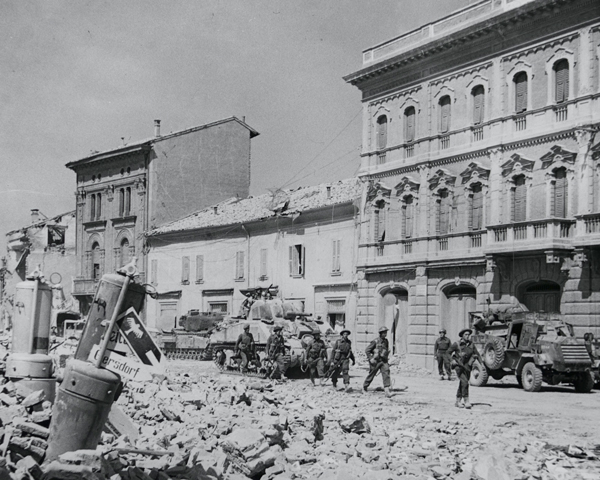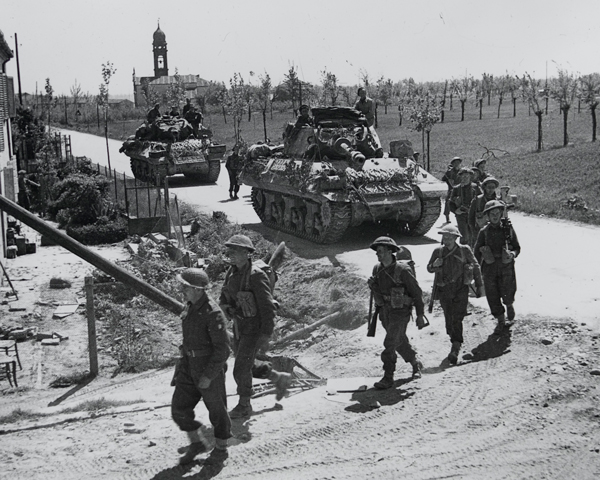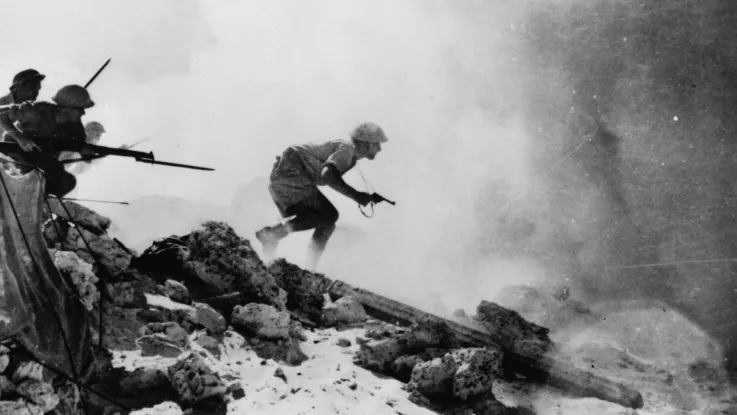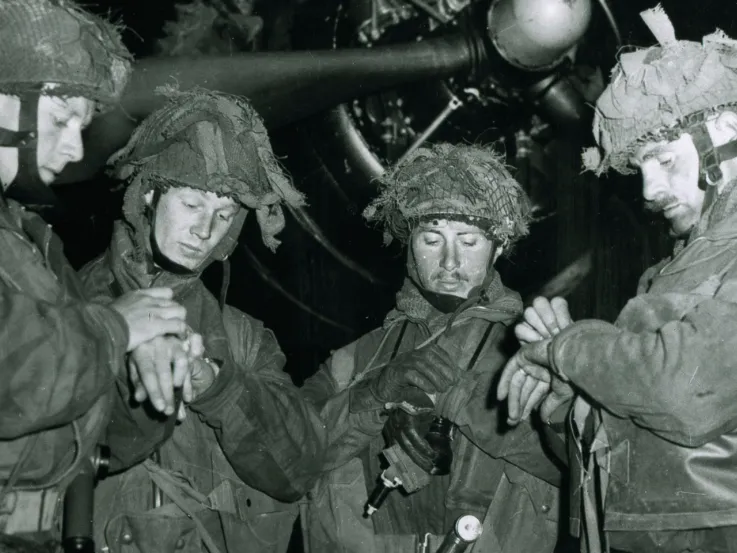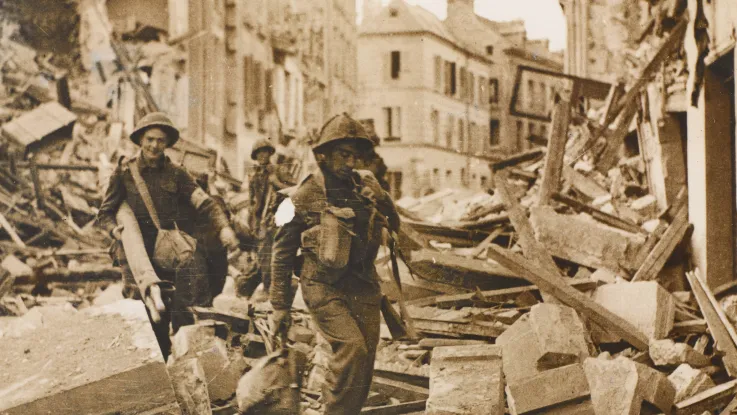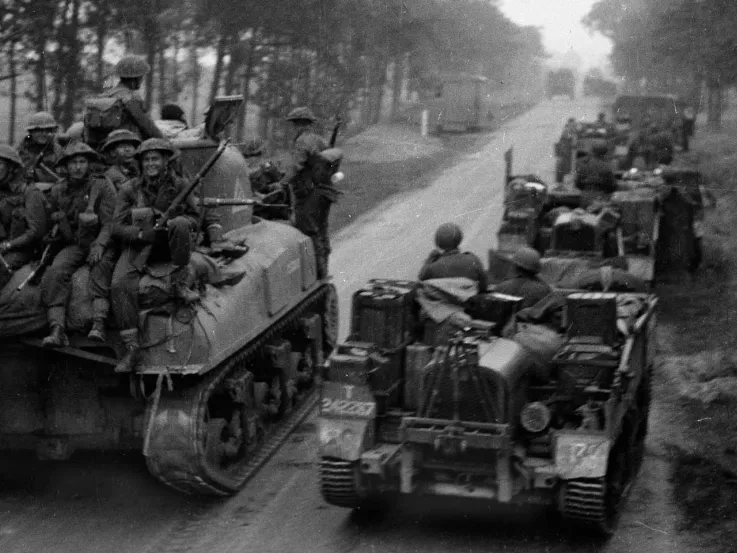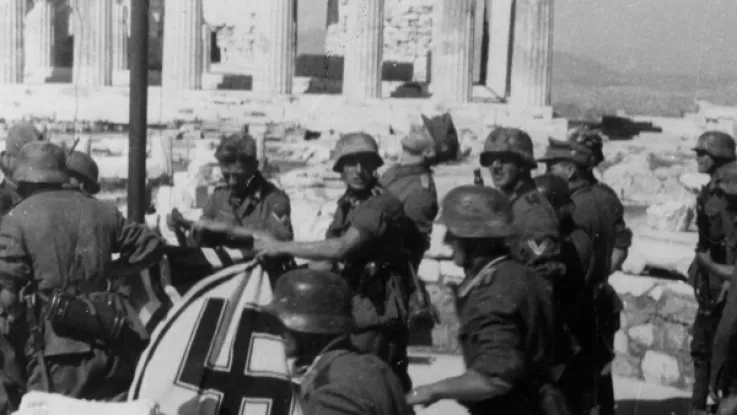A soft underbelly?
Following their victory against the Axis forces in North Africa, the British had high hopes for the development of Allied strategy in the Mediterranean. They believed that an attack on Italy might lead to a breakthrough. British Prime Minister Winston Churchill even termed that nation ‘the soft underbelly of Europe’.
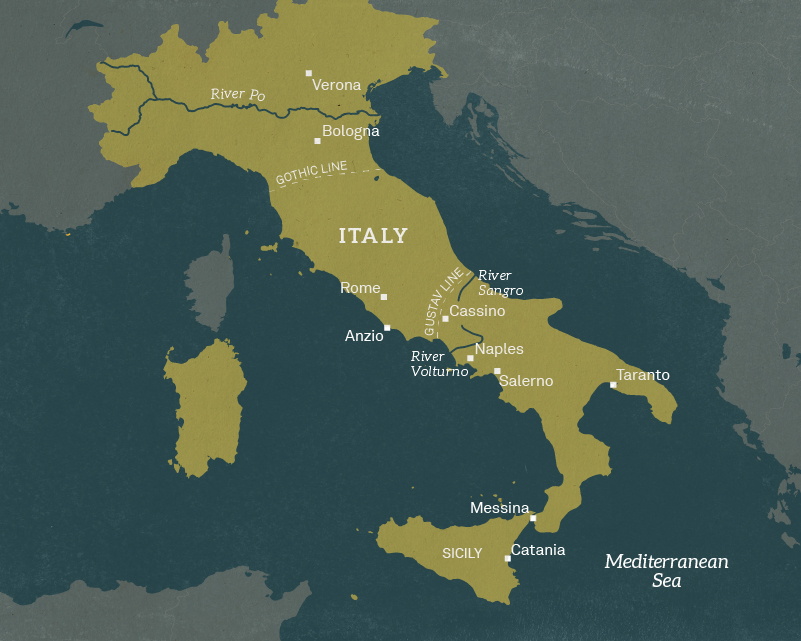
Map of Italy, 1944
At its best, the campaign would knock Italy out of the war, persuade neutral Turkey to join the Allies, support the adjacent operations in the Balkans, and ultimately launch the Allied armies into Austria and then the heart of Germany.
At worst, it would tie down substantial enemy forces, drawing troops away from the Russian Front and answering Soviet demands for Allied action. It would also suck in enemy reserves from France, where the Allies hoped to land in 1944.
Success in Italy would bring new hope to the many nations under Nazi rule and also secure new airfields from which to intensify the bombing of Germany and the Balkans.
Allied disagreement
However, the Americans were not convinced. Rich in manpower and resources, they wished to put all their efforts into a direct assault across the Channel and strike at Hitler through northern France as soon as possible.
Their agreement to the Italian adventure was grudging and conditional upon the withdrawal of forces whenever they were required in North West Europe.
Tough old gut
Although the Allied attack on Italy made the Italians surrender and tied down German strength, it did not lead to the strategic results the British had hoped for. There was to be no ‘soft underbelly’. Instead, the Allies found themselves attacking what US General Mark Clark called ‘a tough old gut'.
Rough terrain
The Germans fought doggedly in terrain crossed by rivers and mountains well suited for defence. Italy's winter cold and summer heat exhausted the attackers.
Highly mechanised forces such as the US Fifth and British Eighth Armies found that vehicles were at times more of a hindrance than a help. Rain frequently suspended what little mobility they had.
Many British positions in the hills could only be reached by pack animals or porters. The regular supply of food and ammunition was often slow or hindered by bad weather.
Wounded men often had to be carried back several miles to reach full medical aid, or even to the point at which they could be transferred to a vehicle.
Lack of resources
Italy’s vulnerable coastline could not be exploited effectively by the Allies through amphibious operations due to a lack of ships and landing craft.
In November 1943, seven battle-hardened Allied divisions were withdrawn from Italy for service in the forthcoming Normandy landings. A further seven, including the highly effective French Expeditionary Corps, were withdrawn in the summer of 1944 for the Allied landings in southern France. Finally, in January 1945, four more divisions were transferred from Italy to North West Europe.
The successes in Italy were achieved against this background of overstretched resources and shortages of ammunition, reinforcements and shipping.
Holding the enemy
Yet, the achievements of the Allied forces in the Mediterranean were by no means inconsiderable. On D-Day, 6 June 1944, they were helping to hold down nearly 70 enemy divisions. There were then 33 German divisions in northern France to repel the invasion.
Quiz
The Allied forces in Italy consisted of soldiers from how many nations?
Operation Husky
Operation Husky, the invasion of Sicily, was the largest single assault landing carried out by the Allies during the war. Over 180,000 soldiers went ashore on 10 July 1943, compared with the 156,000 troops who landed in Normandy on 6 June 1944.
The invasion force landed along 105 miles of the coastline and on 26 different beaches. The 15th Army Group, under General Sir Harold Alexander, comprised the British Eighth Army under General Sir Bernard Montgomery, and the Seventh US Army under General George Patton.
Heavy fighting
Due to successful deception, the landings in Sicily surprised the enemy, but the Germans soon rallied. The Eighth Army found itself engaged in heavy fighting in difficult terrain near Catania. But, following a dramatic thrust from the west to Messina by the Seventh US Army, Sicily was overrun by 17 August 1943.
The Germans and Italians succeeded in evacuating over 60,000 of their troops, as well as much of their equipment, to mainland Italy. Their losses, which eventually amounted to 156,000 men, were inflicted mainly on Italian units.
'The struggle in Italy will be continued with unshakable determination with the aim of breaking the enemy attacks and to forge final victory for Germany and her allies.'Adolf Hitler — June 1944
Invasion of Italy
On 3 September 1943, the Eighth Army crossed the Strait of Messina and invaded the ‘toe’ of Italy. The Germans retreated slowly using demolitions, mines and booby-traps to delay the British.
Early on 9 September, General Mark Clark’s US Fifth Army began landing on the beaches south of Salerno, where they met stiff resistance. At the same time, the British 1st Airborne Division went ashore at Taranto on the ‘heel’ of Italy. By the end of September, the Allies were in Naples.
Surrender
Shortly before the Salerno and Taranto landings, Italian dictator Benito Mussolini was overthrown. The new Italian government surrendered to the Allies.
Most of the Italian Army was quickly disarmed by the Germans, whose troops now manned key positions throughout Italy. Once the Allies had landed, the Germans originally planned to withdraw slowly to northern Italy.
Defence lines
But Hitler ordered his forces to hold a defensive position south of Rome through the winter of 1943-44. This focused on the Gustav Line, which ran from coast to coast and included the heights and monastery of Monte Cassino.
As the Allies inched towards the Gustav Line, they encountered other German defence positions, anchored on the natural strength of rivers or mountains, each of which had to be captured before the advance could continue. These included the Volturno Line and the Barbara Line, both of which were broken in October and November 1943.
The Allies had to smash through these German defences in set-piece attacks reminiscent of the First World War (1914-18).
Eastern attack
The Allies first attempted to breach the Gustav Line by attacking its eastern margins. They successfully crossed the River Sangro, and the coastal town of Ortona was captured by the Canadians after bitter fighting in December 1943.
But the Eighth Army's failure to take Orsogna put an end to the drive up the eastern coast. Rain, flooded rivers, and high casualties, as well as the departure of General Montgomery (to begin planning for D-Day), halted Allied plans until early 1944.
'It was more than the stubble of beard that told the story; it was the blank, staring eyes. The men were so tired that it was a living death. They had come from such a depth of weariness that I wondered if they would quite be able to make the return to the lives and thoughts they had known'.Photographer Margaret Bourke-White describing soldiers at Cassino — 1944
Monte Cassino
In four great battles (January-May 1944), the Allies then attempted to punch a hole through the Gustav Line at Monte Cassino. This marked the entrance to the strategically pivotal Liri Valley, which opened the way to Rome. The area was dominated by the 500-metre high monastery, but the Germans had also constructed minefields and fortifications in the surrounding hills and valleys.
In order to minimise casualties, the Allies launched a massive bombardment of the German defences prior to their assault. This laid waste to the historic monastery and surrounding town. However, most of the German defenders survived and were able to exploit the ruins to create an even more formidable set of defences.
Anzio landing
In an attempt to assist the offensive and cut German communications from Rome, an Allied amphibious landing was carried out on the west coast of Italy at Anzio. The landing on 22 January 1944, 25 miles south of Rome and 70 miles behind enemy lines, was carried out by the 1st British and 3rd US Divisions.
At first, the Allies met little resistance. But they were too few in number for a major drive inland, and were quickly trapped in their beach-head by German reinforcements. Bitter fighting was to continue for months before the Allies were able to break out of Anzio.
Monte Cassino taken
In May 1944, a general Allied offensive breached the Gustav Line at several points and troops entered the Liri Valley. During this attack, Eighth Army troops finally occupied Monte Cassino.
General Wladyslaw Anders' 2nd Polish Corps secured it on 18 May. Under constant artillery and mortar fire, and with little cover for protection, the Poles drove out the defenders in fierce, sometimes hand-to-hand, fighting. The battle to take Cassino was the bloodiest of the entire campaign.
Rome occupied
On 23 May 1944, seven Allied divisions broke out from Anzio. On 4 June, the Fifth Army entered Rome. Although a welcome propaganda victory, this drive on the Italian capital meant that many of the Germans retreating from the Gustav Line avoided being completely cut off and captured.
Gothic Line
Pushing northwards, Allied units closed with the Trasimeno Line, the first German defensive line north of Rome. They then advanced to the far more formidable Gothic Line, at the approaches to the Po Valley.
The Eighth Army had broken through this line by September, but deteriorating weather slowed operations to a crawl. However, a German counter-attack during the winter was repulsed.
Civil war
In the winter and spring of 1944-45, extensive partisan activity took place behind the German lines in northern Italy. In this region, the Germans had created a fascist puppet state, the Italian Social Republic (ISR). But many locals backed the Allies and the pro-Allied Italian government in Rome. As a result, the struggle here took on the characteristics of a civil war.
Allied special forces and commandos provided direction and arms to the partisans, sabotaging lines of supply and communication, and pinpointing targets for air strikes. But the Germans, along with Italian fascists, carried out many reprisals against civilians suspected of supporting the partisans and Allies.
Breakthrough
The front remained largely static until 9 April 1945, when British forces attacked in the east. This was followed five days later by an American assault in the west. Cutting through enemy resistance, the attacks converged on Bologna, which fell on 21 April. Four days later, the Allies crossed the River Po, and Verona was captured on 26 April.
Mussolini, who had earlier been rescued from Italian captivity by German commandos, retreated north with the Germans and their ISR allies. But he was captured by partisans and executed on 28 April 1945. The following day, the Germans in Italy surrendered to the Allies.
Although the Allies did not reach Vienna, Field Marshal Sir Harold Alexander’s ultimate goal, they had destroyed the German Army in Italy.
‘I rejoice in the magnificently planned and executed operation of the 15th Group of Armies which are resulting in the complete destruction or capture of all enemy forces south of the Alps… This great final battle in Italy will long stand out in history as one of the most famous episodes in this Second World War’.Prime Minister Winston Churchill to Field Marshal Sir Harold Alexander — April 1945
Analysis
The Italian campaign had come to be seen by the Allies as a massive holding attack. It would force the Germans to keep a high proportion of their strength in the Mediterranean theatre and make the task of Allied forces elsewhere easier.
This strategy was always controversial. It could equally be argued that the Germans were tying down Allied forces, which might have been better employed elsewhere.
Yet, for most of the last 14 months of the war, the Germans deployed more divisions in Italy than the Allies. This was despite the fact that the Allies were the attacking force. German casualties for the Italian campaign were around 336,000, while those of the Allies totalled 313,000.

